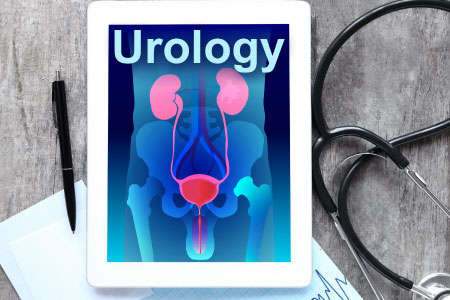Non-surgical hospital services often go undocumented or under-billed for urologists. Why? Many coders, both new and seasoned, have little experience in properly coding these services, which leads to loss of deserved reimbursement.
Critical: You need to understand the special coding rules and clinical scenarios for coding non-surgical hospital services, says urology expert Michael Ferragamo, MD, in the ProfEdOnDemand training session, “Urology Coding for Non-Surgical Hospital Services.” Coders are often confused about how to correctly bill for hospital consultations, shared hospital visits, observation services, hospital admissions after initial emergency room or office visits, and so much more.
Tackle Tricky E/M Scenarios
The American Urological Association (AUA) offers several Q&As to further your understanding of how to capture billable services for non-surgical urology. Here’s one:
Scenario #1: The urologist saw a patient in the office during the day for hematuria, for which the patient was evaluated, treated, and released from the office. Later the same evening, the patient contacted the urologist on call in acute pain and was admitted to the hospital that night. Can you bill for a separate Evaluation and management (E/M) service for the office visit and hospital admission?
Answer: No, you cannot bill a separate office visit and admission code on the same day, according to AUA. You can bill for only the hospital admission. But you can add the office visit earlier in the day to the work of the admission service and bill the admission service at a higher service level, if you have the proper documentation.
Use Modifiers When Appropriate
Test yourself with another real-world example involving modifier 25:
Scenario #2: The urologist performs a cystoscopy, which reveals a bladder tumor of unspecified behavior. The urologist discusses the treatment options and recommendations with the patient. Even though you’re using the same ICD-10 code, can you use modifier 25?
Answer #2: Yes, you can, stated Ray Painter, MD and Mark Painter in a tutorial for Urology Practice Today. The global service package for the cystoscopy would include making sure the patient is fit to have the service, including any history, physical exam, and medical decision-making for determining to proceed with the service.
But if the cystoscopy revealed a bladder tumor and you have documentation of the time the urologist spent discussing the treatment recommendations with the patient, you could report this separately under an E/M code and append modifier 25, the Painters explained. (Modifier 25 is for a significant, separately identifiable E/M service by the same physician on the same day of the procedure or other service.)
In this case, you don’t need to worry about reporting both the cystoscopy and E/M with the same diagnosis code, because the treatment of the cystoscopy’s finding is not part of the diagnostic cystoscopy, the Painters noted.
Pre-/post-op: AUA also offers guidance on modifiers. If one surgeon performs the pre-operative services, the surgery, and the post-operative care, you don’t need a modifier, the association explained. But where different urologists are involved in the before/after surgery care, you’ll use the following modifiers:
- 54 – surgical care only
- 55 – post-operative management only
- 56 – pre-operative management only
Caveat: You must coordinate with the surgeon’s office to ensure reimbursement, the AUA stressed. “All involved must agree on the code being billed and the appropriate modifiers appended to the CPT codes that represent the services performed by the billing providers.” You should also have an agreement for the transfer of care between the providers before the surgery.
Beware These Exceptions
You do not need to use modifiers 54 and 55 in certain situations, where instead you can simply report the appropriate E/M code without appending the modifiers, according to the Centers for Medicare & Medicaid Services’ Global Surgery Booklet.
Such situations include:
- Where a transfer of care does not occur and a urologist (not the surgeon) provides occasional post-discharge services;
- When the urologist provided follow-up services for minor procedures that another physician performed in an emergency department; and/or
- When the services of a urologist, other than the surgeon, are required during a postop period for an underlying condition or medical complication.
Takeaway: As you can see, coding for non-surgical urology services in and out of the hospital setting isn’t always easy, especially when you’re trying to bill for services that would normally be included in the global package. But if you don’t learn how to properly code and bill for these services—including hospital and observation discharges, critical care, and prolonged hospital visits—you’re leaving valuable reimbursement dollars on the table, according to Ferragamo.




